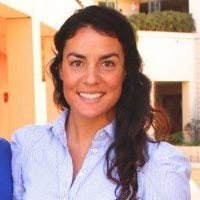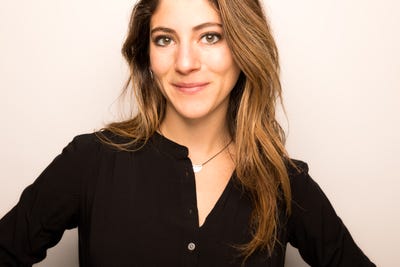Salty Girl brings collaboration, traceability to seafood industrySalty Girl brings collaboration, traceability to seafood industry
Salty Girl Seafood recently won Fish 2.0's award for Best Business Opportunity and was named Woman-Owned Business of the Year by the Pacific Coast Business Times. Here, marine scientist/surfer girl/co-founder Norah Eddy shares how Salty Girl can drive positive change in the seafood industry.

What do you get when you combine two marine scientists gifted with business savvy? You get Salty Girl Seafood, a newly launched brand founded by Norah Eddy and Laura Johnson, based in Santa Barbara, California, dedicated to bringing transparency and traceability to the fish industry.
Available in fresh-frozen or ready-to-eat packs, each sustainably caught package is equipped with a tracking code. Enter it into Salty Girl’s website and learn the scientific name of your fish, where its was caught and possibly even the name of the boat.
Here, Eddy talks about the importance of short supply chains, traceability and where sustainability efforts still need to be focused in the global seafood market.
newhope360: Why is Salty Girl a better option than other seafood brands out there?
Norah Eddy: We founded Salty Girl to provide better access to sustainable and traceable seafood. The way we started doing that was sourcing directly from fishermen, because traceability is easiest when supply chains are short, as opposed to traditional seafood supply chains that have really long and convoluted supply chains.
The majority of seafood consumed in the United States is being landed on the dock, and it can often pass through 5 to 10 hands. I’ve seen studies that found up to 30 people can handle seafood before it gets to your plate. That’s when you lose traceability, and that’s why we have such a big problem of species mislabeling.
nh360: But are direct partnerships possible to scale? Or is this model destined to stay small?
NE: This was an issue that we recognized when we started Salty Girl. We had all of these relationships with our fishermen built a number of different ways—some were through personal connections, some were through word of mouth.
As we have grown, we’ve started buying greater amounts of fish from fewer fisherman. We also plan to partner with another like-minded company that shares our same values and has existing traceable supply chain infrastructure. It’s a win-win—the industry relies on trust and sound partnerships to maintain integrity and make sure everyone is on the same page for this objective.
nh360: Through Salty Girl’s “trace your fish” program, consumers have access to a wealth of information. Why is it important for them to know their salmon hails from Alaska, or the fisherman who caught it?
NE: Ultimately it’s about creating strong connections between the consumer and the ocean. It’s really unique that we eat wild species of fish. It’s the last widespread wild harvested thing we consume, which is pretty incredible when you think about it. The human element of harvesting seafood is a wonderful story to share.
Above and beyond that, [knowing where your seafood came from] encourages people to understand the connectivity between the fish on your plate and fish as a natural resource. We’re passionate about sharing this idea with the consumer. People can use this information to support healthy oceans and make decisions that will tip the scale for more sustainable food.
nh360: What does positive change in the seafood industry look like to you?
NE: Traceability is a huge issue because it means accountability. I don’t think there’s a lot of accountability right now in the seafood industry. So much of what we need right now is awareness, and I hope Salty Girl will be a catalyst for positive change to incentivize fishermen to harvest sustainably.
A strong indicator that positive change is happening is that we’re seeing a lot more collaboration between businesses. The more we see the transition to traceability, the greater possibility for collaboration.
nh360: What’s one issue in seafood that still needs a lot of work?
NE: It’s important to consider that our fisheries are doing well. The developed world has done a pretty good job at managing [healthy fish stocks]. There’s a lot of strong science that suggests stocks around the world have rebounded.
Now it’s time to look at the developing world. About 50 percent of our global catch is harvested from fragmented fisheries in developing nations. How do we bring these fisheries up to par?
While I think it’s great to say we can put a Marine Stewardship Council label on our product to let consumers know it was sustainably harvested, we shouldn’t stop there and call it a day. We should also look at and support the fisheries that still have a lot of sustainability work to be done.
About the Author
You May Also Like





